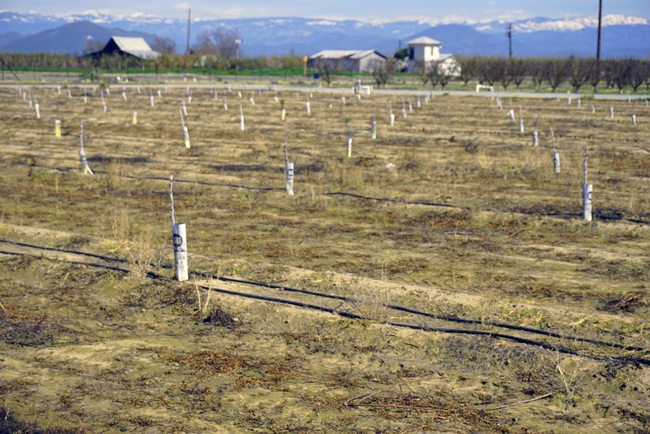
Posts Tagged: Kurt Hembree
Ten UC Cooperative Extension academics retire July 1
- Jose Aguiar
- Rachel Elkins
- Beth Grafton-Cardwell
- Allan Fulton
- Kurt Hembree
- Anna Martin
- Glenn McGourty
- John Roncoroni
- Rhonda Smith
- Cheryl Wilen
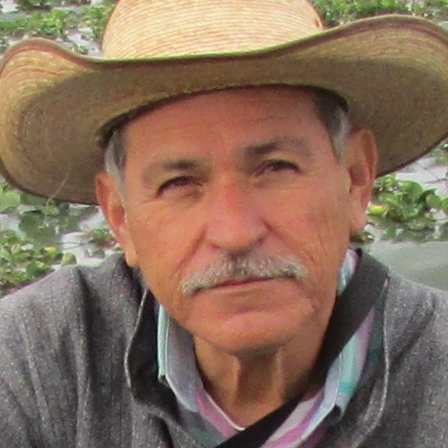
Jose Aguiar, who has been working as a vegetable crops small farm advisor for the University of California Cooperative Extension in the Coachella Valley in Riverside County since 1992, will retire on July 1.
"My job is one of the best jobs in the world. I enjoy the research and education that we provide our community. From the beginning, there was so much to learn, and it has been that way every day on the job," Aguiar said.
What started many years ago to help his family economically became a passion turned into a career. He was 12 years old when, alongside his father, he started working in the Coachella Valley agricultural fields.
"When all my friends went on vacation, I was going to work in the fields. It was my turn to sow asparagus, harvest okra. I did not like it at all because you have to put on a long shirt, because pollen scratches you a lot; it is a very difficult crop to harvest," remembers Aguiar.
Aguiar specializes in bell pepper, which was a great help in 2012. That year in the Coachella Valley, a microscopic worm threatened the bell pepper and chili crop that had an estimated value of $90 million. UC Agriculture and Natural Resources experts worked with farmers to understand why it was a problem there and not in other pepper growing areas. That's where the idea of creating a UC ANR pepper workgroup to research these problems came about.
“Meeting with the small scale producers, I had a list of 12 or 15 problems,” Aguiar said. “I started to speak with other advisors about having a conference for limited scale producers where we could present them with research based information. I invited all the small farmers, and we covered production problems, insect and disease problems, postharvest and even marketing of their particular crops."
Aguiar expressed the essence of his 20 years of passion at work: "I have enjoyed presenting research-based information to farmers and pest control advisers. I have enjoyed walking in many fields and seeing and hearing about the problems firsthand. I have enjoyed working with the small farmers and addressing some of the issues, such as producing a crop with a limited budget. I have enjoyed collaborating with many UC farm advisors, specialists, and the local agencies involved in agriculture. I have enjoyed working with groups doing and working on community gardens."

Rachel Elkins, UC Cooperative Extension pomology farm advisor for Lake and Mendocino counties, plans to retire July 1 after 36 years at UC, 33 years in her current position.
“Rachel has been invaluable to the pear industry in Mendocino and Lake counties,” said Bob McClain, California Pear Advisory Board's field and research director.
After earning a bachelor's degree in international studies at University of the Pacific and a bachelor's degree in agricultural pest management at UC Berkeley, the Richmond native landed an internship helping UCCE integrated pest management in Fresno County in 1982. After earning two master's degrees, in pomology and plant protection and pest management at UC Davis, Elkins joined UCCE as a farm advisor intern in 1986 and became a farm advisor in Lake and Mendocino counties in 1987.
“I began with zero knowledge about pear production, my main assigned crop,” Elkins said. “From this beginning, I dived in; I am still learning every day. I am fortunate to have developed close working relationships with UC, industry and colleagues in Oregon and Washington, as well as other states and countries where pears are grown.”
She co-edited and co-authored over 200 publications. Her most recent co-authored article on predatory phytoseiid mites was just published in California Agriculture journal.
Elkins is known for her research to control codling moth populations by interfering with the insect's sex life instead of using insecticides. Releasing pheromones confuses male moths seeking mates. Working with UC Riverside researcher Harry Shorey, “she was instrumental in developing pheromone puffers for codling moth control,” McClain said, noting that pheromones distributed in orchards on plastic ties were hung by hand 200 to the acre. “With the puffer, you needed two per acre, which saved on labor costs.”
A 2003 UC cost study showed that the pheromone puffers saved growers $9 per ton or nearly $200 per acre, based on 20 tons per acre. The California Department of Pesticide Regulation honored the project with its 2000 IPM Innovator Award. The puffer is now used on nearly all the pear acreage in Lake County. This success in pears led to its use in apple and walnut orchards.
Although pears are her specialty, she has worked with more than 25 fruit and nut crops, including walnuts, apples, kiwifruit, olives and wine grapes. In 1993, Elkins started the UC Master Gardeners Program in Lake County, which is still going strong today.
“My walnut research program has greatly increased in the past decade as higher prices and organic markets have led to new Lake County plantings,” she said. “I established four long-term rootstock trials in 2011-2012, which are providing local growers with important data to decide whether to replace seedling Paradox with newer clonal selections.”
In 2015, she received the American Society for Horticultural Science award for Outstanding Extension Education Materials for her video “Budding, Grafting and Planting Walnut Trees,” honoring renowned Lake County nurseryman Alex Suchan.
Elkins, who was granted emeritus status by UC ANR, will return part-time, funded by the California Pear Advisory Board and Pear Pest Management Research Fund, to continue research assisting the statewide pear industry.

Long time UC Cooperative Extension advisor Allan Fulton said his interest in agriculture started young and never waned. He will retire July 1 after nearly 35 years working in the industry. Most of his career was in extension, first in Kings County and later serving Tehama, Glenn, Colusa and Shasta counties.
“From the time I was tall enough to see over the steering wheel of an old flatbed pickup to guide it while my uncle fed hay to cattle in snow-covered pastures, I knew I wanted to be involved in agriculture,” Fulton said. “There's nothing like the rewards of a good day's work growing food or fiber, whether it was stacking hay, branding cattle, irrigating corn and alfalfa or harvesting the crops.”
Fulton earned bachelor's and master's degrees at Colorado State University, Fort Collins, in agronomy, soil and irrigation science. In 1986, he was named the soils, water and winter grains advisor for Kings County UC Cooperative Extension.
For over 11 years, Fulton developed, demonstrated and taught irrigation management practices for orchard and agronomic crops in order to improve efficiency. He conducted research on soil and water amendments to manage soils with slow water infiltration, and evaluated salt tolerance of agronomic crops, trees and halophytes, plants that thrive when irrigated with brackish drain water. He also conducted research to introduce improved small grain varieties and fertility practices to produce high protein cereal grains.
In 2000, Fulton returned to UCCE as the irrigation and water resources advisor in the northern Sacramento Valley, a position he would hold for more than 20 years. Fulton worked on developing irrigation and soil management practices for orchard and agronomic crops that sustain production, use water and energy efficiently and prevent off-site water quality impacts. He also teamed with other water resource professionals to help farmers and allied industries understand aquifer systems, groundwater management approaches and conjunctive water management concepts.
“I will always be grateful for the countless acquaintances, conversations and collaborations. Many thanks to the growers, my UC colleagues, consultants and policy makers throughout the Central Valley who worked with me over the years,” Fulton said. “I value our precious land and water resources and our agrarian-based society and hope I have contributed to its sustainability in some small way.”
In retirement, Fulton and his wife plan to stay in Red Bluff, where three of their five children and four of their seven grandchildren live close by. And he won't abandon his commitment to agriculture either.
Fulton plans to volunteer one day a week at UC Cooperative Extension to continue a few projects still underway. There will also be time to enjoy other pursuits, he said.
“My wife and I hope to travel the U.S. and Canada,” he said. “That is in God's hands, but we're looking forward to helping others where we can and experiencing what is in store for us.”
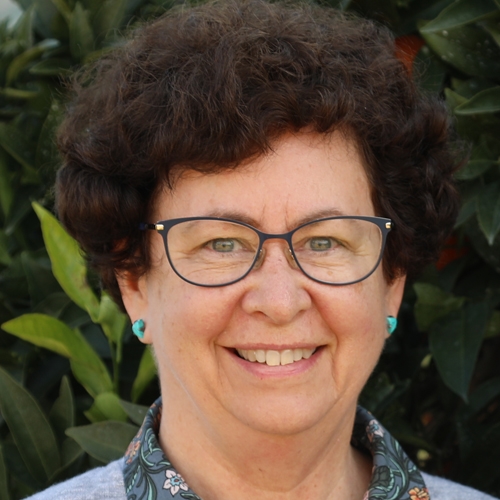
UC Cooperative Extension specialist Beth Grafton-Cardwell retires July 1, a hero in the battle against pests that threaten the livelihood of citrus growers in California, and a successful advocate for reducing use of broad spectrum pesticides.
Grafton-Cardwell – who holds a bachelor's degree in biology from UC Berkeley, a master's in entomology from Purdue University and a doctorate degree in entomology from Berkeley – was named the UC Riverside citrus entomology specialist for the San Joaquin Valley in 1990. Her initial focus was on helping growers reduce their use of harsh pesticides through careful pest monitoring, choice of selective pesticides and preservation of natural enemies.
Along with her staff, Grafton-Cardwell studied the release of predatory mites for control of thrips and mites, validated degree-day units and pheromone traps for citrus cutworm, determined the effects of insect growth regulators on vedalia beetle (a natural enemy of cottony cushion scale), studied the best use of more than 30 new insecticides and miticides, and monitored pesticide resistance of California red scale and citrus thrips.
“It has been a wonderful career full of interactions with colleagues, growers and pest control advisors who shaped the direction of my research,” Grafton-Cardwell said.
During the last decade of her career, pesticide use in citrus has increased once again because of three issues: The drought and increasing temperatures exacerbating pests, new treatments required for pests of export significance, and invasive pests, most importantly the Asian citrus psyllid that can spread the devastating bacterial disease huanglongbing.
“It has been very rewarding to help growers navigate these challenges,” she said. “We have innovative citrus growers in California and excellent scientists at UC. I have every confidence that they will be able meet these challenges and maintain a vibrant California citrus industry.”
In June 2006, Grafton-Cardwell was named director of the UC Lindcove Research and Extension Center in Exeter, a 175-acre facility that supports research projects on citrus breeding, horticulture and pest management. Last year, Grafton-Cardwell hosted the launch of a fundraising program to build an educational complex at Lindcove to be called the Ray Copeland Citrus Center.
“Expanding the capacity of the Lindcove REC to conduct research and extension programs has made the directorship a very rewarding experience,” she said.
In retirement, Grafton-Cardwell plans for frequent travel to visit her children and grandchildren in Missouri and Massachusetts, working with community organizations in the Visalia area and, as an emeritus specialist, writing up past research and assisting with Lindcove's fundraising campaign.

Retiring UC Cooperative Extension weed science advisor Kurt Hembree credits his mentor and predecessor, Bill Fischer, for his successful 26-year career conducting a weed research and extension program for farmers in Fresno County.
“He instilled in me a real appreciation for both the art and science behind weed management,” Hembree said.
Hembree started working as Fischer's agricultural assistant when he was a plant science student at Fresno State. After graduation in 1986, Hembree was promoted to staff research associate, a position he held for eight years.
Recognizing the opportunity to succeed Fischer in his academic role, Hembree returned to Fresno State to complete a master's degree. Fischer retired in 1994 and Hembree was named UCCE weed science advisor later the same year.
Hembree said he was privileged to work with a tight-knit group of academic and non-academic staff, growers, consultants and the allied industries.
“Everybody knew everybody. I developed strong friendships over my career,” he said. “I cherish that.”
An early research success set a course for the future.
The weed nightshade posed a significant problem in seeded fields of processing tomatoes, a plant in the same family. Hembree conducted trials on a new product that selectively removed the nightshade.
“That was a major breakthrough,” Hembree said. “We were able to get the product labeled for tomatoes and it made a huge impact right away.”
That was just the beginning.
“When I came on board, there weren't many products registered for weed control in orchards, vineyards and agronomic crops,” Hembree said. “We worked closely with the industry and there were lots of opportunities to look at new products. These new tools were economically sound and reduced the hard labor of hand weeding.”
In retirement, Hembree plans to move with his wife to northern Mississippi to be closer to family.

Anna Martin, UC Cooperative Extension nutrition, family and consumer sciences advisor in San Joaquin County, devoted her career to the health and wellness of youth and adults locally and statewide. She retires July 1 after 26 years serving in various UCCE roles that focus on nutrition, food safety, physical activity and food security education.
With a bachelor's degree in home economics from California State University in Sacramento, Martin took a part-time position in 1993 as an educator with the Expanded Food and Nutrition Education program in San Joaquin County. A year later, she was elevated to full time to also work on the Food Stamp Nutrition Education Program, which is now called CalFresh Healthy Living, UC. Both programs are federally funded initiatives administered by UC Cooperative Extension to help low-income families use their food budgets to put healthful meals on the table.
In 2001, Martin completed a master's degree in community nutrition and was named to the academic position she held in San Joaquin County the next 19 years.
“I designed my program to promote individual, community, system and environmental changes to positively impact the health behaviors of low-income youth and families,” Martin said. “Working with my colleagues across the state, we sought to understand and address obesity and chronic disease prevention, health disparities, food safety and food insecurity.”
Martin studied the health behaviors of low-income populations to develop curricula, delivery methods, evaluation tools and other materials that could be incorporated into the education programs. Over the years, Martin co-authored 26 peer-reviewed publications, 62 abstracts or posters, and 52 non-peer reviewed publications or reports.
Despite these many achievements, Martin said she most valued the interactions with current and past co-workers and colleagues in San Joaquin County and across the state, the people she describes as her “work family.”
“I think the experience has been so positive because we come together around projects and programs that make a difference in the health and welfare of the families we serve,” Martin said. “My years with Cooperative Extension have created strong bonds within UC ANR and within my community that I foresee will last a lifetime.”

When Glenn McGourty joined UC Cooperative Extension as a plant science advisor in Mendocino County in 1987, he was one of the first farm advisors in the state to have support for organic and sustainable farmers written into his job description. He helped transform Mendocino County into an environmentally friendly farming leader in California. McGourty retires July 1.
After earning a bachelor's degree in botany at Humboldt State and a master's degree in plant, soil and water science at the University of Nevada Reno, McGourty worked as a Cooperative Extension urban horticulturist in Las Vegas. Later he was a lecturer in the Environmental Horticulture Department at Cal Poly, San Luis Obispo, and managed his family's walnut farm in nearby Paso Robles part time.
When McGourty was named a UCCE farm advisor, UC was beginning to endorse a systems approach to sustainable farming.
“I was certainly one of the people who took it to heart,” McGourty said.
In the late 1980s, most grape growers in Mendocino County disked the soil in vineyard rows every year to reduce weeds. Insecticides were applied that kept workers out of the vineyard for three weeks.
“Vineyards seemed pretty barren and not friendly to nature. We had a lot of soil erosion and water quality issues,” McGourty said. “My colleagues and I tried to find solutions that would boost soil organic matter and encourage beneficial insects and mites. One of our landmark research projects was coming up with good cover cropping systems for wine grapes.”
Those practices are widely implemented today, and across California interest in soil health and sustainability continue to grow. McGourty was assigned to also serve Lake County, where wine growers there adopted a strong interest in sustainable wine-growing practices.
“We have the Healthy Soils Program, in which CDFA is paying farmers to grow cover crops and use compost to sequester carbon in the soil. This came out of our research on alternative farming systems conducted in our region,” McGourty said.
Another research interest has been evaluating wine grapes from the Mediterranean region adapted to warm climates.
“After many years of working with ornamental plants, I realized that the plants that do best in California are all from a Mediterranean climate region,” McGourty said. “It made sense for me to look for wine grape varieties that like that climate, too.”
McGourty has been honored by UC ANR with emeritus status. As an emeritus advisor, McGourty plans to work on a national online database of wine grape varieties adapted to warm climates and a Lake County wine grape research project.
Retirement promises to be busy for McGourty. In March, he received the most votes in the primary election for a position on the Mendocino County Board of Supervisors. He will be immersed in campaigning until the runoff election in November.
Even if the election doesn't go his way, McGourty won't be idle. He manages a 10-acre wine grape and walnut farm on the Russian River, where he farms with the sustainable practices he taught local farmers during his career.
“I am so lucky! I have had one of the best jobs in UC and live in one of the prettiest places in California,” he said.

After 38 years of service, John Roncoroni, UC Cooperative Extension advisor specializing in vineyard weed management in Napa County, plans to retire July 1.
Over the years, Roncoroni has become a trusted resource for weed management research and extension, not only in the North Coast, but throughout California. He is known for his research on conventional and organic herbicides, hedgerows in vineyards, irrigation pond weed control, and sheep for grazing weeds in commercial trees and vines.
“Over the years working with John Roncoroni, I experienced firsthand his dedication, passion and knowledge to educate farmers and agricultural workers – both in English and Spanish – about best management practices to control and eradicate invasive weeds and weeds of concerns for the agricultural industry. John will be missed greatly,” said Jose Chang, Monterey County assistant agricultural commissioner and former deputy agricultural commissioner in Napa County.
After earning a bachelor's degree in environmental policy analysis and planning at UC Davis, Roncoroni began his career as a UC Davis postgraduate researcher in 1983, then became a staff research associate working with other weed scientists in crops, forest and rangelands. He earned an master's degree in horticulture at UC Davis in 1999.
In 2007, when Roncoroni became a UC Cooperative Extension advisor in Napa County, most conventional grape growers used glyphosate, or Roundup, for the weed control.
“In fact, Roundup only was considered the most sustainable weed management method,” Roncoroni said. “This over-reliance on glyphosate resulted in biological resistance by weeds.”
He taught growers about alternative herbicides and non-chemical weed control methods and how to make these methods more effective. Little did he know that this research would become even more valuable when some consumers began to object to glyphosate use.
Because he has studied weed management in a broad array of environments, Roncoroni is often asked by UCCE colleagues to give weed control tips to different audiences ranging from golf course turf managers to small-scale Mien strawberry farmers.
“Over the years I have had the opportunity to work on weed control in forestry, rangeland, row crops, alfalfa, fruit and nut trees, but it was my early training in weed management in turf and ornamentals, mulches and alternative weed control that added to my effectiveness in teaching weed control to urban audiences and to training UC Master Gardeners,” said Roncoroni, who has trained more than 1,700 UC Master Gardener volunteers in weed identification, biology and management.
Roncoroni's expertise has been recognized by the California Sustainable Winegrowing Alliance, which asked him to assist in writing their standards for sustainable winegrowing, and the California Department of Pesticide Regulation, which asked him to serve on its Pest Management Advisory Committee. In 2018, the California Weed Science Society named Roncoroni an Honorary member, its highest honor.
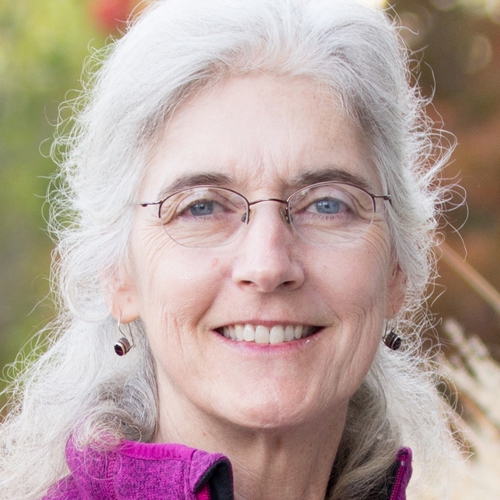
Rhonda Smith has been heralded as the “heroine of the vineyards” for her groundbreaking work in helping combat the parade of pathogens and other problems that have plagued Sonoma County grapevines – and alarmed growers.
A scientist first and foremost, Smith steadily emerged as Sonoma County's expert on all things wine grape during her nearly 34 years as a University of California Cooperative Extension viticulture advisor. Over the decades, she used her scientific know-how, meticulous research methodology and incredible work ethic to advance wine grape production in Sonoma County.
She cultivated working relationships with growers and vineyard managers, setting up field trials and collecting data in vineyards throughout Sonoma County. As the years rolled by, she earned the respect and admiration of grape growers who wonder what they will do without her as she heads into retirement.
“Rhonda Smith became a true icon in Sonoma County viticulture for her timely research and her effective way of communicating valuable information to the wine grape industry,” said Santa Rosa grower Bob Dempel.
Tito and Janet Sasaki, who farm wine grapes in the Sonoma Valley, are among the growers who have benefited from Smith's dedication to the wine grape industry.
“Rhonda Smith is the quiet heroine of the vineyards in Sonoma County. She has been the family physician of Sonoma County vines for more than three decades,” said Tito Sasaki, past president of Sonoma County Farm Bureau and a long time agriculture industry leader. He marvels at how she has managed to raise a family while coming to the rescue of growers facing problems like red blotch virus, vine mealybug, Pierce's disease and many other threats.
JanetSasaki said, “Rhonda is the hardest working person I know. My friends and I have been working with her since 1989. No vineyard is too small for her to take an interest in the problem. She is very respected by everyone in the wine grape industry.” - Tim Tesconi
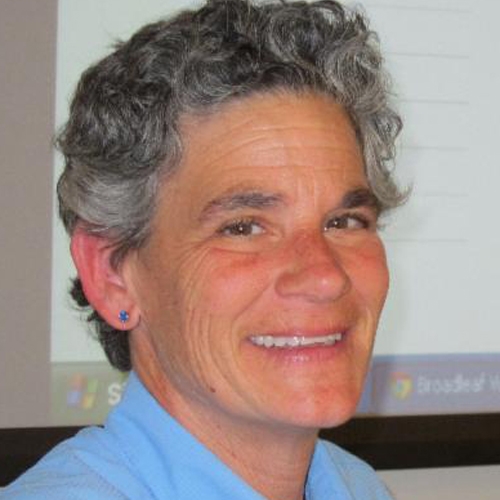
UC Cooperative Extension integrated pest management advisor Cheryl Wilen retired in April after serving UC Agriculture and Natural Resources in a wide variety of leadership and academic capacities during her 25-year career. To help with transitions in the San Diego County UCCE office, Wilen accepted a six-month assignment in May to continue serving as interim director.
Wilen earned a bachelor's degree in horticulture at the University of Maryland, a master's degree in horticulture at University of Arizona and a doctoral degree at UC Riverside. Following graduation, Wilen worked a year at UC Riverside as a post-doctoral fellow.
In 1995, Wilen was hired by UC ANR to conduct applied research in the turf, ornamental horticulture and nursery industries to develop and promote the use of integrated pest management in San Diego, Los Angeles and Orange counties. She shared her results and information generated by scientists across the university with growers and pest control advisers to reduce the use of toxic pesticides, cut the cost of pest control and use environmentally sound methods in production.
Over the years, Wilen was frequently tapped to take on leadership roles while maintaining her academic program. She served as acting and interim director of the Statewide UC IPM Program, program leader of UCCE's Endemic and Invasive Pests and Diseases Strategic Initiative, and as county director in San Diego County. Wilen also had opportunities to take sabbatical and study leaves to improve her Spanish-speaking skills, learn about international participatory extension methodology and receive training on research methods to study snails and slugs.
“I love working with UC Agriculture and Natural Resources,” Wilen said. “The positions I held matched well with my professional and personal style. I always felt that I was responsible for choosing my destination and the journey to get there, whether that was my career or my research and extension programs.”
Wilen said she also valued the relationships she developed over the years in her job.
“I met and became friends with people in UC that I would never have been so lucky to know without the opportunities afforded me by serving on diverse committees,” Wilen said.
Wilen has been awarded the honor of emeritus status, which will continue her academic relationship with UCCE even after her stint in the director post is complete.
“I have a couple of grants I'm continuing to work on,” she said.
She also has plans to do things that she didn't have time for while working full time.
“Plans for my free time include entering sweepstakes, organizing electronics cables, continuing to paddle with my outrigger canoe club, exploring the outdoors, travel, volunteering and enjoying time with my partner and the rest of my family,” she said
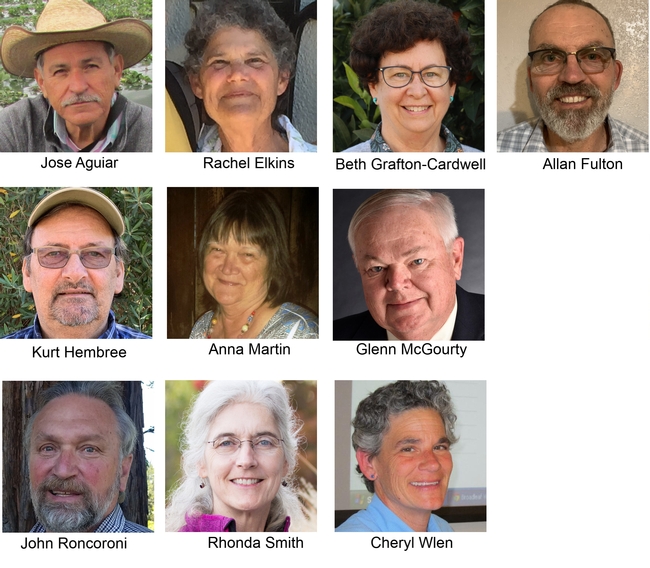
UC ANR's 2020 academic retirees.
New labor laws factored into UC cost studies for table grape production
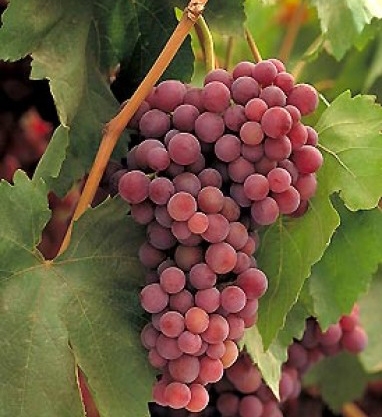
The studies focus on four table grape varieties. There are two early maturing varieties, Flame Seedless and Sheegene-21, that begin harvest in July, one mid-season maturing, Scarlet Royal, and one late maturing, Autumn King, which begins harvest in October. The studies estimate the cost of establishing a table grape vineyard and producing fresh market table grapes.
“Labor costs are expected to rise with reduced labor availability, increases in minimum wage rates and new overtime rules that went into effect in 2018,” said Ashraf El-kereamy, UCCE viticulture advisor in Kern County and co-author of the cost studies.
“We included detailed costs for specialized hand labor of certain cultural and harvest operations.”
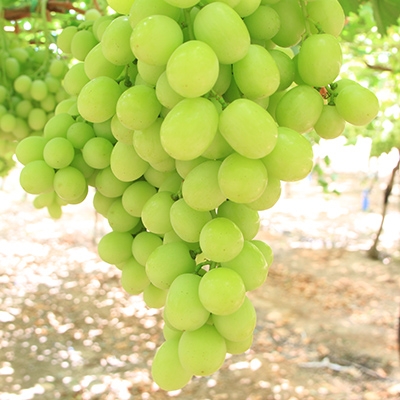
“The new California minimum wage law will gradually decrease the number of hours employees can work on a daily and weekly basis before overtime wages are required. There are additional stipulations for overtime wages and scheduling of work that are part of the new law,” said Daniel Sumner, director of the Agricultural Issues Center.
Input and reviews were provided by UC ANR Cooperative Extension farm advisors, specialists, grower cooperators, California Table Grape Commission and other agricultural associates. The authors describe the assumptions used to identify current costs for table grape establishment and production, material inputs, cash and non-cash overhead. A ranging analysis table shows profits over a range of prices and yields. Other tables show the monthly cash costs, the costs and returns per acre, hourly equipment costs, and the whole farm annual equipment, investment and business overhead costs.
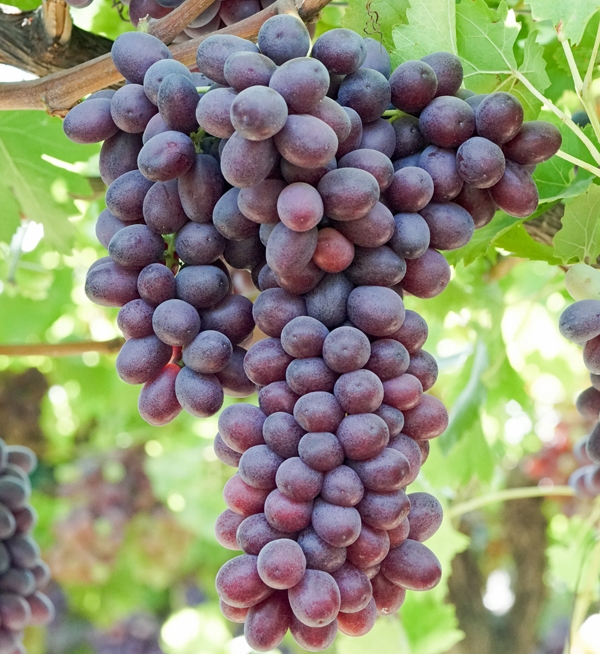
- “2018 - Sample Costs to Establish and Produce Table Grapes in the Southern San Joaquin Valley – Flame Seedless, Early Maturing”
- “2018 - Sample Costs to Establish and Produce Table Grapes in the Southern San Joaquin Valley – Sheegene-21 (Ivory™), Early Maturing”
- “2018 - Sample Costs to Establish and Produce Table Grapes in the Southern San Joaquin Valley – Scarlet Royal, Mid-season Maturing”
- “2018 - Sample Costs to Establish and Produce Table Grapes in the Southern San Joaquin Valley – Autumn King, Late Maturing”
All four table grape studies can be downloaded from the UC Davis Department of Agricultural and Resource Economics website at http://coststudies.ucdavis.edu. Sample cost of production studies for many other commodities are also available at the website.
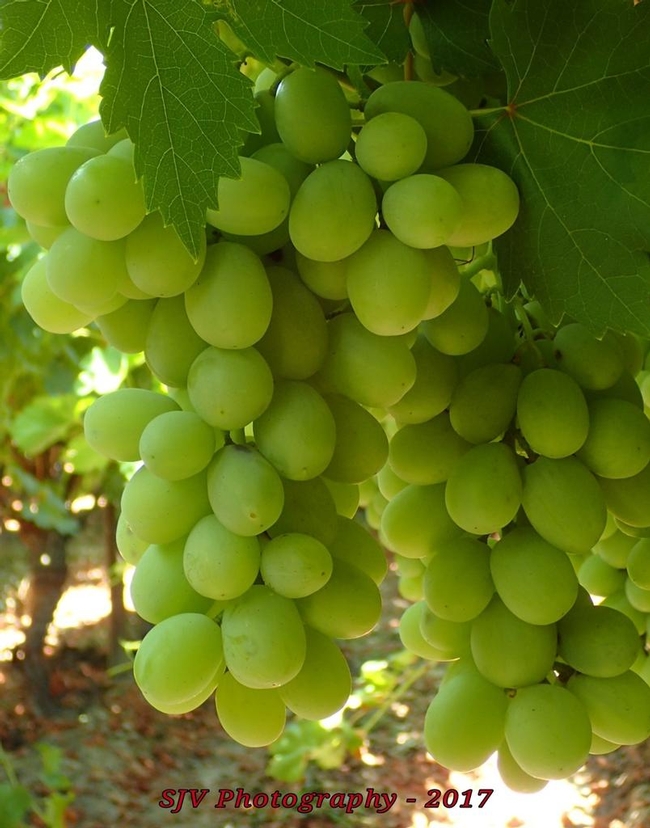
For information about local table grape production, contact UC Cooperative Extension viticulture specialist Matthew Fidelibus at mwfidelibus@ucanr.edu, UCCE viticulture advisor Ashraf El-kereamy in Kern County at aelkereamy@ucanr.edu, UCCE entomology advisor David Haviland in Kern County at dhaviland@ucdavis.edu, UCCE weed advisor Kurt Hembree in Fresno County at kjhembree@ucanr.edu, or UCCE viticulture advisor George Zhuang in Fresno County at gzhuang@ucanr.edu.
Researchers raise concern over paraquat health risks
The popular herbicide paraquat works well and is inexpensive, but emerging research shows a correlation of paraquat exposure and Parkinson's disease, reported Kerry Klein on Valley Public Radio.
Klein met with UC Cooperative Extension weed advisor Kurt Hembree at an almond orchard near Selma that was clear of weeds. Growers kill weeds because weeds kill crops, Hembree said.
"Direct competition for water and nutrients. Whatever the tree likes, the weeds like," he said.
Hembree explained how the paraquat works.
"Paraquat's a contact-type herbicide," he said. "In other words, it's a material that, if you sprayed it on a plant, it'll disrupt the plant's cells. And basically in five or six days, whatever it touches, it spots up and it causes necrosis and death on the tissue."
Paraquat is toxic, so it requires careful handling to protect the safety of applicators.
“Something like paraquat, you're going to wear rubber boots, you're going to wear goggles while you're spraying,” Hembree said. “You don't want to get this stuff on your skin or on your mouth or anywhere.”
The KVPR story said paraquat is among the top 10 most common herbicides in California, and the San Joaquin Valley gets more than three-quarters of the state total. Caroline Tanner, a neurologist at UC San Francisco, was also interviewed for the story.
“People who mixed or applied this chemical had more than double the risk of developing Parkinson's disease compared to people really very similar as far as where they lived, even what they did for a living, age and gender,” she said.
However, people who were careful with personal protective equipment didn't have a greater risk of Parkinson's disease, Tanner said.

